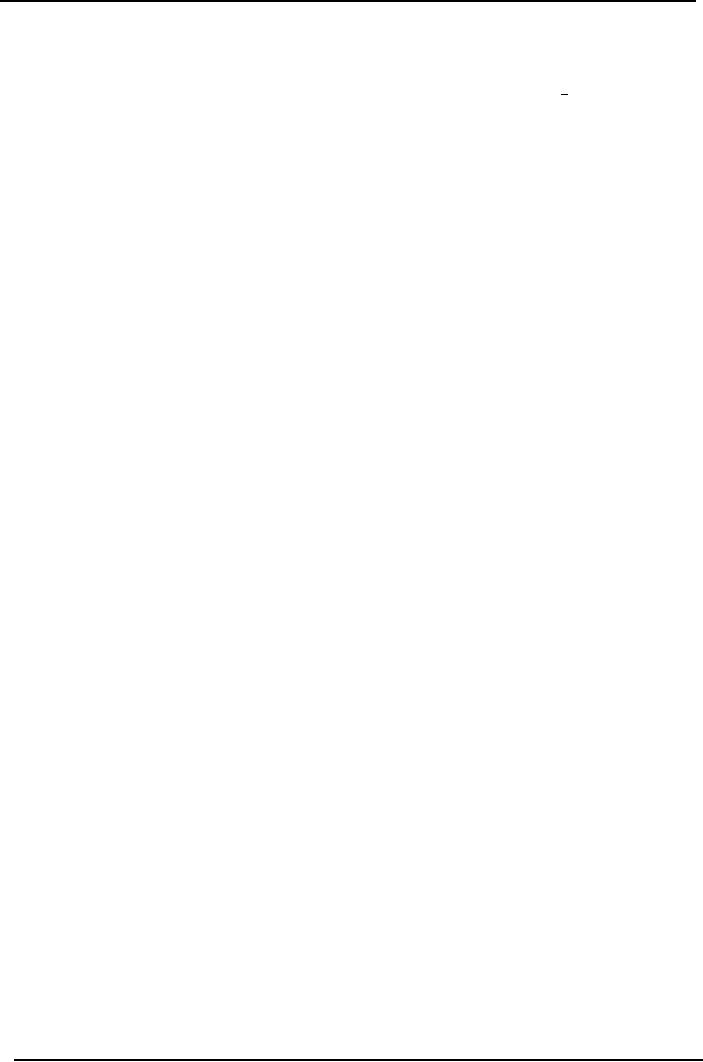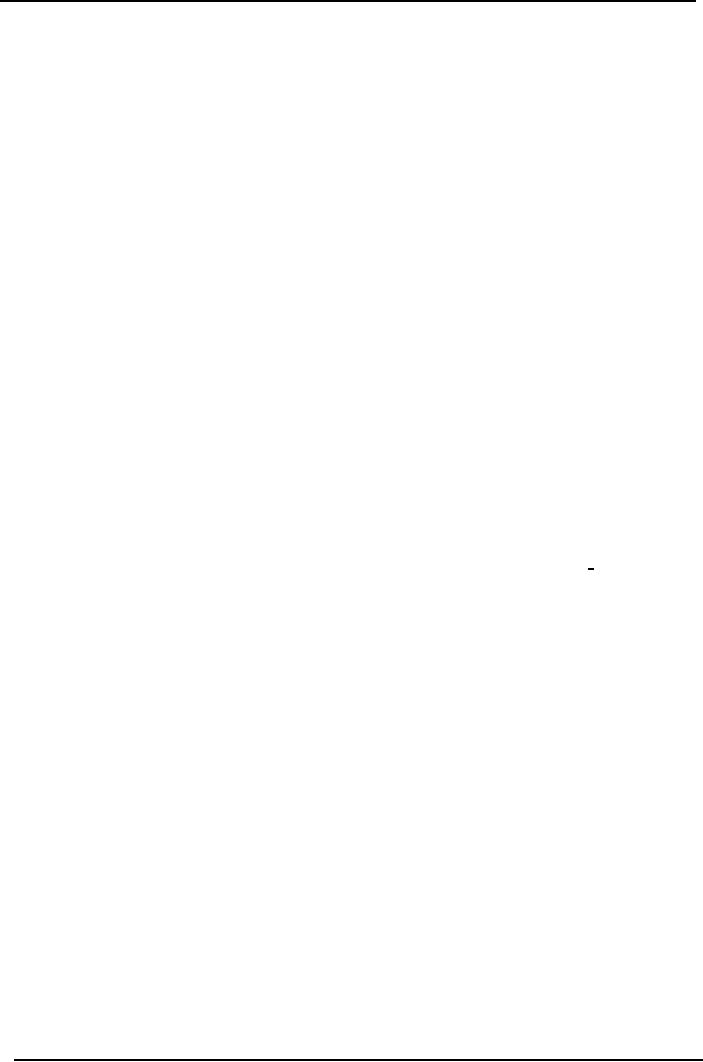 |

Theories
of Communication MCM 511
VU
LESSON
35
SPIRAL
OF SILENCE
A
somewhat more controversial theory of
media and public opinion is the concept
of spiral of silence.
This
can be regarded as a form of agenda-setting
but one that is focused on
Macro-level rather than
micro-level
consequences.
In
the words of its originator Elizabeth
Noelle-Neumann:
"observations
made in one context the mass media spread to
another and encouraged people
either to
proclaim
their views or to swallow
them and keep quite
until , in a spiraling process, the one
view
dominated
the public scene and the
other disappeared from
public awareness as its adherents
became
mute
, this is the process that can be
called a spiral of
silence'.
In
other words, because of people's
fear of isolation or separation from
those around them, they end
to
keep
their attitudes to themselves
when they think they
are in the minority. The media,
because of a
variety
of factors, tend to present one (or at
most two ) sides of an issue
to the exclusion of others,
which
further encourages those
people to keep quiet and makes it even
tougher for the media to
uncover
and
register that opposing
viewpoint.
So
Noelle-Neumann's focus is not on
micro-level conceptualizations of how
average people come
to
perceive
the public agenda; rather she is
concerned with the macro-level,
long-term consequences of
such
perceptions.
If
various viewpoints about
agenda items are ignored,
marginalized, or trivialized by media reports,
then
people
will be reluctant to talk
about them. As time passes,
those viewpoints will cease
to hear in public
and
therefore cannot affect political
decision-making. She argued that her
perspective involves a return
to
the concept of powerful mass media.
During the summer and fall of
1965, Elisabeth
Noelle-Neuman,
the
head of a prominent public
opinion research institute in
Germany, observed an interesting
phenomenon.
They observed the two major parties
election in German election.
The
phenomenon in which predictions about the
outcome seemed to sway the attitudes and
behaviors of
voters,
led Noelle-Neumann to formulate the
theory that has come to be
known as the spiral of silence
theory.
The
theory was first formulated
and tested to explain
puzzling findings in German politics
where
opinion
poll findings were inconsistent with
other data concerning expectations of
who would win an
election
and signally failed to predict the
result.
The
explanation offered was that
the media were offering a misleading view
of the opinion consensus.
They
were said to be leaning in a leftist
direction, against the underlying opinion
of the silent majority.
The
concept of the spiral of silence from a
larger body of theory of
public opinion which was
developed
and
tested by Noelle-Neumann over a number of
years. The relevant theory
concerns the interplay
between
four elements:
�
Mass
media
�
Interpersonal
communication and social
relations
�
Individual
expressions of opinion
�
And
the perceptions which individuals
have of surrounding climate of
opinion in their
own
social
environment.
Fear
of isolation
So
the main assumptions of the theory
are as follows:-
Society
threatens deviant individuals
with isolation. Individuals experience
fear of isolation
continuously
.This fear of isolation
causes individuals to try to
assess the climate of opinion at
all times.
109

Theories
of Communication MCM 511
VU
The
results of this estimate
affect their behavior in
public, especially their
willingness or not to
express
opinions
openly.
Noelle-Neumann
begins by proposing that individual have
a strong need to connected to a
social
collective
and that cohesiveness within
that collective must be
constantly ensured. She
bases some of
this
reasoning on the experiments done in social psychology
which demonstrates that
individuals will
not
express opinions and behavior in ways
that they know are
wrong in order to avoid social
censure
(disapproval)
and criticism and to remain part of the
crowd. She notes that
this force is one driven
by
fear
of ostracism (exclusion) and fear of
isolation, not by desire to be
part of the winning team or on
the
bandwagon.
Assessing
public opinion
Given
this fear of isolation it is
important for individuals to be
able to gauge public
opinion, for in order
to
fit in on a particular issue,
you need to know what
others think about that
issue; ideas relevant to
an
individual's
assessment of public
opinion.
She
develops several ideas relevant to an
individual's assessment of public
opinion. First she
proposed
that
individuals have an natural ability to
judge the climate of public
opinion. She calls this the
quasi-
statistical
sense and finds evidence for
this ability in both the
willingness of individuals to make
prediction
about public opinions and
the uncanny accuracy of many of
those predictions. However
she
acknowledges
that assessments of opinions
are not always accurate.
She blames much of this
pluralistic
ignorance
on the mass media.
She
argues that media presentations influence
individual assessments of public
opinions because the
media
are ubiquitous and
continuous (i.e. they are
everywhere in terms of both
time and space
and
cannot
be avoided by the individual), and
positions presented by media are
consonant (i.e. various
media
sources present essentially the same image of a
given topic).
Three
characteristics of the news
media that produce this
scarcity of perspective
She
identified three characteristics of the
news media that produce this scarcity of
perspective:
1.
Ubiquity: the media are virtually
everywhere as sources of
information.
2.
Cumulation: the various news media
tend to repeat stories and
perspectives across their
different
individual
programs or edition, across the
different media themselves and
across time.
3.
Consonance: the congruence or similarity
of values held by news people
influences the content they
produce.
She
identified six parts of
working journalist' everyday
lives as factors that produce this
consonance:
1.
The concurring assumptions and
experiences held by all
journalists at all levels and in
all fields about
the
public's criteria for
acceptance of their work in
terms of both style and
content.
2.
Journalist' common tendency to confirm
their own opinions, to
demonstrate that theirs is the
proper
interpretation,
and to confirm that predictions have
indeed been correct.
3.
Their dependence on common sources,
such as the relatively few
wire and news video
services.
4.
Their "reciprocal
influence in building up frames of
reference;" newspaper
people watch what's on
the
television news, television
news programs monitor on one
another, and broadcast news
people scour
(search)
the newspapers for consensus
and information.
5.
Their striving for
acceptance from colleagues and
superiors.
6.
journalists relative uniformity of
views as a result of demographic and
attitudinal attributes shared
by
the
news profession's practitioners.
This
view of media effects suggests that
two different social processes, one
macro-level and one micro-
level,
are operating simultaneously to produce
effects.
110

Theories
of Communication MCM 511
VU
Macro-level
Audience
members, because of their
desire to be accepted may
choose to remain silent when
confronted
with
what they perceive to be
prevailing counter opinion.
Micro-level
News
people, because of the dynamics of
their newsgathering function and
their need to be
accepted,
present
a restricted selection of news, further
forcing into silence those in the
audience who wish to
avoid
isolation. These media images
also influence an individual's
sense of prevailing public
opinion
and
sometimes lead to an inaccurate reading
of the public climate.
Combining
the first two factors Fear of
isolation and the assessment of
public opinion Leads to the
key
prediction
spiral of silence theory. Noelle-Neumann
argues that because
individuals fear
isolation, when
they
believe prevailing opinion is
opposed to their opinion or is
moving in a direction away
from their
opinion,
those individuals will not be
wiling to speak
out.
Noelle-Neumann
argues that because
individuals fear
isolation, when they believe
prevailing opinion is
opposed
to their opinion or is moving in a
direction away from their
opinion, those individuals will
not
be
wiling to speak
out.
Noelle-Neumann
sees the spiral of silence as a dynamic
process. She believes that
the unwillingness
to
speak
out on a particular issue
will further enhance media
portrayals and personal assessments
that
prevailing
opinion is against a certain opinion. As
these portrayals and
assessments become even more
codified,
some individuals will defect to the
opinion that seems to be
prevailing or will at least
fail to
recruit
new people to the less-dominant position.
As a result, actual opinion will
follow predictions of
opinions
and spiral down.
In
brief, the theory proposes
that in order to avoid
isolation on important public
issues support, many
people
are guided by what they
think to be the dominant or declining
opinions in their
environment.
People
tend to conceal their views
if they feel they are in a
minority and are more willing to
express
them
if they think they are
dominant. The result is that
those views which are
perceived to be dominant
gain
even more ground and alternatives retreat
still further. This is the
spiraling effect referred
to.
Contingency
Factors
Noelle-Neumann
does not propose that the
spiral is a universal process.
She points to three caveats
that
limit
the applicability of the theory to
specific issues and
people.
1.
First, the theory will operate
only when the issue at hand is a
moral issue of good and bad,
not a
factual
issue that can be argued and settled
through rational and logical
interaction. That is, the spiral
of
silence
should occur with regard to public
opinion about capital punishment or
abortion but not
with
regard
to public opinion abut
inflation rates.
2.
Second, she notes that the
unwillingness to speak out
will be less pronounce in highly
educated and
more
affluent portions of the
population.
3.
She contends that for
any topic, hardcore of proponents will
always be willing to speak
out on an
issue
regardless of perceptions that prevailing
opinion is in the opposite
direction.
Extensions
of spiral of silence
theory
Extensions
of spiral of silence theory have been
developed in two major
areas.
First,
some scholars have developed
theoretical predictions regarding the
group that people
consider
when
assessing prevailing opinion.
Specifically it has been
suggested that individuals do
not look so
much
to overall societal opinions as to the
opinions as to the opinions of relevant
reference groups.
Researchers
have found out that
perceived reference group opinions had a
larger effect on
opinion
expression
than perceived societal
opinions.
In
contrast to this some
scholars have found out that
individuals were more comfortable
expressing
dissenting
opinions within a valued reference
group.
111

Theories
of Communication MCM 511
VU
Second
area of development from the
theory has involved further
explication of the characteristics
of
those
who are silenced and
those who still speak
out- in the face of contrary
public and reference
group
opinion.
Recall
Neumann originally posited
that the spiral of silence effect
would not be as strong for
highly
educated
and affluent portions of the population
and that a hard core of
individuals would always
be
willing
to speak.
Researchers
have identified many other
additional variables which
affect the willingness to speak
out in
the
face of contrary public sentiment.
These include Strength and
certainty of opinion, political
interest
and
extremity. The obtrusiveness of the
issue and an individual's level of
self-efficacy.
Summary
of spiral of silence according to Elihu
Katz in 1983
1.
Individuals have opinions.
2.
Fearing isolation, individuals
will not express their
opinions if they perceive
themselves unsupported
by
others.
3.
A "quasi-statistical sense" is employed
by individuals to scan the environment
for signs of support.
4.
Mass media constitute the major source of
reference for information about the
distribution of opinion
and
thus the climate of
support/nonsupport.
5.
So do other reference groups...
6.
The media tend to speak in one
voice, almost monopolistically.
7.
The media tend to distort the
distribution of opinion in society,
biased as they are by the
...views of
journalists.
8.
Perceiving themselves unsupported, groups of
individuals-who may, at times, even
constitute a
majority-will
lose confidence and withdraw
from public debate, thus
speeding the demise of their
position
through the self-fulfilling spiral of
silence. They may not change
their own minds, but they
stop
recruitment
of others and abandon the fight.
9.
Society is manipulated and impoverished
thereby.
112
Table of Contents:
- COMMUNICATION:Nature of communication, Transactional approach, Communication is symbolic:
- THEORY, PARADIGM AND MODEL (I):Positivistic Perspective, Critical Perspective
- THEORY, PARADIGM AND MODEL (II):Empirical problems, Conceptual problems
- FROM COMMUNICATION TO MASS COMMUNICATION MODELS:Channel
- NORMATIVE THEORIES:Authoritarian Theory, Libertarian Theory, Limitations
- HUTCHINS COMMISSION ON FREEDOM, CHICAGO SCHOOL & BASIC PRINCIPLES OF SOCIAL RESPONSIBILITY THEORY
- CIVIC JOURNALISM, DEVELOPMENT MEDIA THEORY & DEMOCRATIC PARTICIPANT THEORY
- LIMITATIONS OF THE PRESS THEORY:Concentration and monopoly, Commercialism
- MCQUAIL’S FOUR KINDS OF THEORIES:Social scientific theory, Critical theory
- PROPAGANDA THEORIES:Origin of Propaganda, Engineering of Consent, Behaviorism
- PARADIGM SHIFT & TWO STEP FLOW OF INFORMATION
- MIDDLE RANGE THEORIES:Background, Functional Analysis Approach, Elite Pluralism
- KLAPPER’S PHENOMENSITIC THEORY:Klapper’s Generalizations, Criticism
- DIFFUSION OF INNOVATION THEORY:Innovators, Early adopters
- CHALLENGING THE DOMINANT PARADIGM:Catharsis Social learning Social cognitive theory
- SOCIAL COGNITIVE THEROY:Symbolizing Capacity, MODELLING
- MODELING FROM MASS MEDIA:Recent research, Summary, PRIMING EFFECTS
- PRIMING EFFECT:Conceptual Roots, Perceived meaning, Percieved justifiability
- CULTIVATION OF PERCEPTIONS OF SOCIAL REALITY:History
- SYSTEMS THEORIES OF COMMUNICATION PROCESSES:System
- EMERGENCE OF CRITICAL & CULTURAL THEORIES OF MASS COMMUNICATION
- REVISION:Positivistic perspective, Interpretive Perspective, Inductive approach
- CRITICAL THEORIES & ROLE OF MASS COMMUNICATION IN A SOCIETY -THE MEDIATION OF SOCIAL RELATIONS
- ROLE OF MASS MEDIA IN SOCIAL ORDER & MARXIST THEORY:Positive View
- KEY PRINCIPLES USED IN MARXISM:Materialism, Class Struggle, Superstructure
- CONSUMER SOCIETY:Role of mass media in alienation, Summary of Marxism
- COMMUNICATION AND CULTURE:Neo Marxism, Characteristics of Culture
- HEGEMONY:What exactly is the meaning of "hegemony"?
- CULTURE INDUSTRY:Gramscianism on Communications Matters
- POLITICAL ECONOMIC THEORY I:Internationalization, Vertical Integration
- POLITICAL ECONOMIC THEORY II:Diversification, Instrumental
- POLITICAL ECONOMIC THEORY III:Criticism, Power of Advertising
- AGENDA SETTING THEORY:A change in thinking, First empirical test
- FRAMING & SPIRAL OF SILENCE:Spiral of Silence, Assessing public opinion
- SPIRAL OF SILENCE:Fear of isolation, Assessing public opinion, Micro-level
- MARSHALL MCLUHAN: THE MEDIUM IS THE MESSAGE AND MASSAGE
- KNOWLEDGE GAP THEORY:Criticism on Marshal McLuhan
- MEDIA SYSTEM DEPENDENCY THEORY:Media System Dependency Theory
- USES AND GRATIFICATIONS THEORY:Methods
- RECEPTION THEORY
- FRAMING AND FRAME ANALYSIS:Information Processing Theory, Summing up
- TRENDS IN MASS COMMUNICATION I:Communication Science, Direct channels
- TRENDS IN MASS COMMUNICATION II:Communication Maxims, Emotions
- GLOBALIZATION AND MEDIA:Mediated Communication, Post Modernism
- REVISION:Microscopic Theories, Mediation of Social Relations